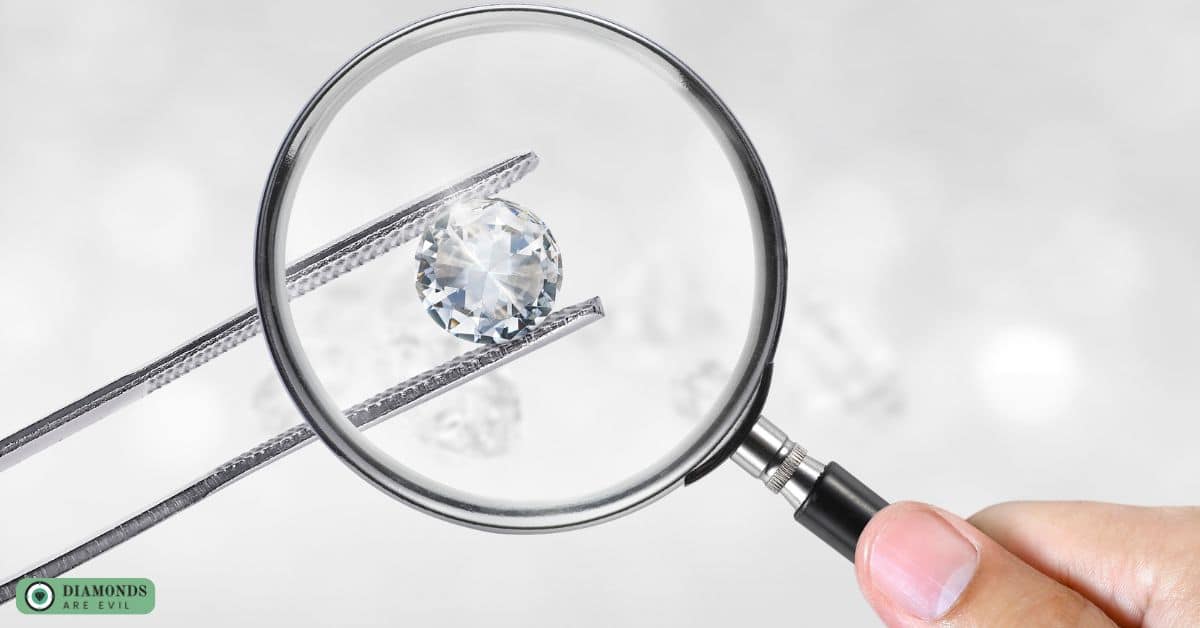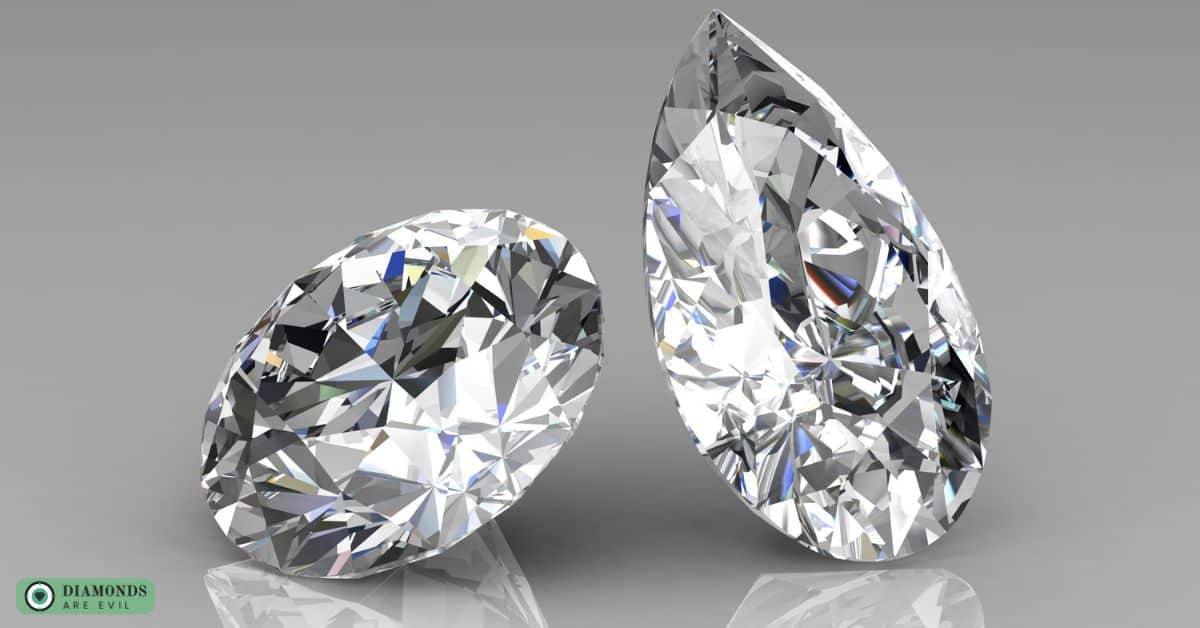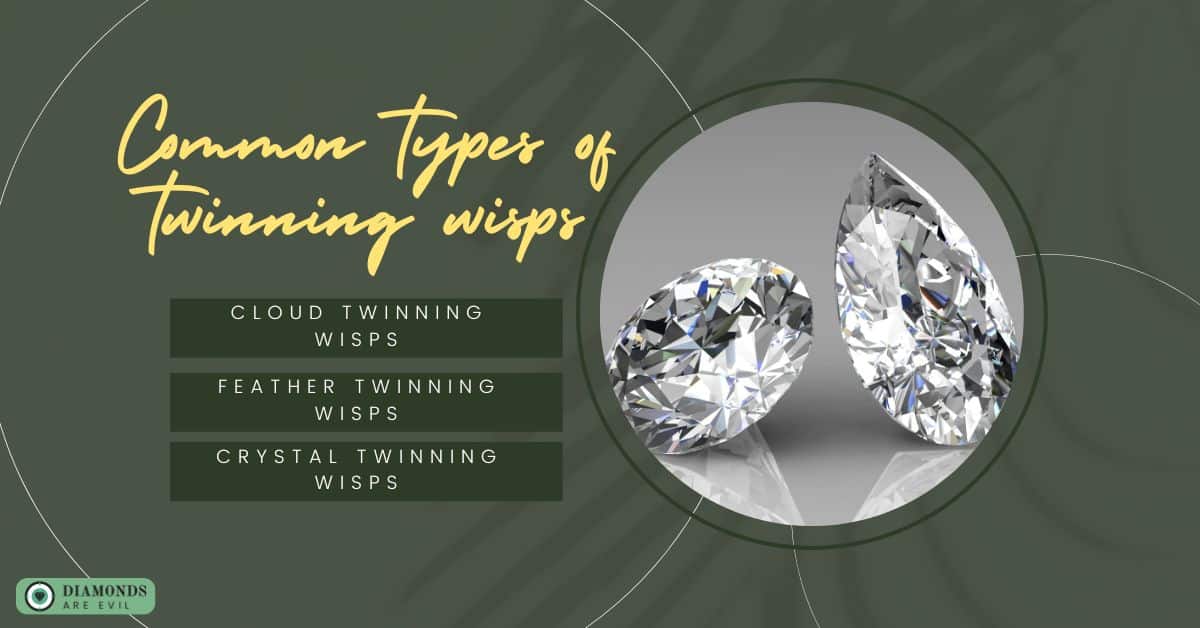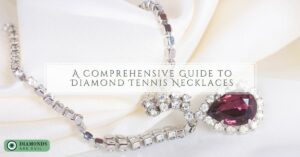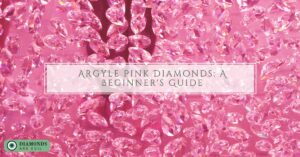Clarity features in diamonds refer to the presence of internal flaws or inclusions. Feathers, clouds, and twinning wisps are common clarity features that can affect a diamond’s appearance and value. Feathers are cracks within the diamond, clouds are clusters of tiny inclusions, and twinning wisps are caused by crystal growth irregularities.
In this blog, we will delve deeper into some of the most common clarity features found in diamonds, including feathers, clouds, and twinning wisps, and explore how they can impact a diamond’s appearance and value.
What are Clarity Features in Diamonds?
Diamonds are renowned for being one of the most beautiful and valuable gemstones. Did you know that they also possess unique clarity features? These features are essentially the inclusions, blemishes or minute imperfections that are present within the diamond itself. While these features may seem like a negative attribute.
They actually serve as a way to identify the diamond’s authenticity while also increasing its value. The four main types of clarity features are included crystals, feathers, clouds, and knots. Each gives the diamond its own unique character. However, it is important to note that a diamond’s value is also determined by the absence of such features. It is important to pay attention to its clarity, as it can greatly affect its quality and overall worth.
Feathers
Feathers in diamonds are the result of natural inclusions and fractures within the stone. These features can have varying levels of clarity, which can ultimately affect the diamond’s value. Feathers can appear as tiny cracks or white lines within the diamond, and their visibility can depend on factors such as size and location.
While some feathers may be visible to the naked eye, others may only be visible under magnification. It’s important to note that not all diamonds contain feathers, and those that do can still be of high quality if the feathers are minimal and not impacting the diamond’s overall beauty.
How to recognize feathers on a diamond with visual inspection
When it comes to diamond clarity, identifying feathers is an essential skill. Feathers are minute cracks within a diamond that form during the gem’s growth or cutting process. To recognize feathers with visual inspection, it’s critical to use a magnifying loupe or microscope to observe the diamond’s surface.
Feathers are often located near the surface or along internal planes of the diamond. They can resemble a small cleavage or a wavy white line. Some feathers may be transparent, while others exhibit cloudy or milky inclusions. It’s crucial to note that not all feathers are detectable with the naked eye, making visual inspection all the more crucial for diamond clarity grading.
Common types of feathers
Feathers are one of the most common inclusions found in diamonds, and they refer to any internal cracks or fractures within the stone. These feather-like features can vary in size, shape, and location within the diamond. Here are some of the common types of feathers found in diamonds.
- Pinpoint Feathers – These are tiny, needle-like feathers that are barely visible to the naked eye. They are usually found in clusters and are not considered to be a significant clarity issue in diamonds.
- Cloud Feathers – These are groups of tiny pinpoint inclusions that can create a cloudy or hazy appearance within the diamond. While they are not always visible, they can affect the overall clarity and transparency of the diamond.
- Feather Cleavage – This is a type of feather that occurs along a cleavage plane in the diamond. Cleavage planes are areas of weakness in the crystal structure of the diamond and can cause the feather to extend deeper into the stone.
- Bearded Feathers – These feathers appear as tiny hair-like inclusions that extend from the surface of the diamond. They are usually caused by the growth of the diamond crystal and can be difficult to remove during the cutting and polishing process.
- Surface-Graining Feathers – These are feather-like features that appear as a result of irregularities in the crystal growth process. They can appear as faint lines, ridges, or grooves on the surface of the diamond.
- Internal-Graining Feathers – Similar to surface-graining feathers, these features occur due to irregular crystal growth within the diamond. However, these feathers appear internally and can resemble faint lines or streaks within the stone.
Clouds
When it comes to diamonds, clarity plays a significant role in determining their value. One factor that can impact a diamond’s clarity is the presence of clouds. Clouds are areas within a diamond that contain microscopic pieces of other minerals, liquids, or gaseous bubbles. These inclusions can reduce the diamond’s ability to reflect light, thus affecting its overall brilliance.
It’s essential to note that not all clouds will negatively impact a diamond’s appearance, as their size, location, and quantity can vary. However, a significant amount of clouds can decrease the diamond’s value. It’s crucial to work with a reputable jeweler to ensure you get a diamond with the appropriate clarity features.
How to recognize clouds on a diamond with visual inspection
Clouds are one of the most common clarity features in diamonds and can significantly affect the stone’s value. Recognizing clouds on a diamond can be done through visual inspection, but it requires training and practice. Clouds typically appear as transparent or whitish areas within the diamond, resembling a faint haze or fog.
They can appear alone or in conjunction with other clarity features, such as feathers or needles. Properly identifying clouds can help you make an informed decision when choosing a diamond and ensure you get the best value for your investment.
Common types of clouds
Clouds are a common inclusion found in diamonds, and they refer to areas of the diamond that contain tiny or large particles of foreign materials. These particles can vary in size and shape, and they can have a significant impact on the overall clarity and appearance of the diamond. Let’s discuss some of the most common types of clouds found in diamonds.
Pinpoint Clouds: These are small clouds of microscopic size that appear as tiny white dots when viewed under magnification. They are typically not visible to the naked eye, and they do not usually have a significant impact on the clarity of the diamond.
Feather Clouds: These are clouds that appear as feathery white or transparent inclusions in the diamond. They are often caused by tiny cracks or fractures in the crystal structure of the diamond.
Crystal Clouds: These are clouds that contain tiny crystals or mineral inclusions that are visible under magnification. They can appear as white, gray, or black specks in the diamond.
Internal Graining Clouds: These are clouds that are caused by irregularities in the crystal structure of the diamond. They can appear as white or transparent lines, streaks, or waves in the diamond.
Clouds with Dark Centers: These are clouds that have a dark center and a white or transparent halo surrounding them. They are often caused by a cluster of crystals or mineral inclusions.
Twinning Wisps
Twinning wisps are one of the most intriguing clarity features found in diamonds. They are a type of inclusion that often resembles thin, wispy lines within the diamond. These wisps are caused by imperfections within the crystal lattice of the diamond, which occur during its formation. While some twinning wisps are barely visible to the naked eye, others can have a significant impact on a diamond’s appearance and value.
Because twinning wisps are a natural occurrence, they are not considered a flaw in a diamond. However, their presence can affect a diamond’s clarity grade and overall aesthetic appeal. Understanding the nature of twinning wisps and how they impact a diamond’s quality is essential for anyone looking to purchase a high-quality diamond.
How to recognize twinning wisps on a diamond with visual inspection
When it comes to diamonds, clarity is one of the most important factors to consider. One interesting clarity feature to look out for is twinning wisps. These wisps can occur when the diamond crystal grows in a twinned structure, resulting in a unique visual pattern that resembles stretched marks on the diamond’s surface. To recognize twinning wisps, a close inspection of the diamond is required.
Using a loupe, examine the diamond in good lighting conditions and look for thin, hair-like lines that intersect each other at certain points. These intersecting lines are the twinning wisps, and they can be an interesting characteristic that adds personality to a diamond. However, it’s important to note that some wisps may negatively affect the diamond’s clarity, so be sure to consult with a professional before making a final purchase decision.
Common types of twinning wisps
Twinning wisps are one of the clarity features found in diamonds. These are thin, thread-like inclusions that resemble small feathers and can affect the diamond’s clarity grade. They form during the diamond’s formation process when two or more crystals grow together, causing the diamond to develop in a twinned pattern.
There are several types of twinning wisps, each with its unique appearance and effect on the diamond’s overall quality. In this list, we will discuss some of the most common types of twinning wisps found in diamonds.
- Cloud Twinning Wisps: Cloud twinning wisps are larger inclusions that look like wispy clouds. They can be white, gray, or black and are usually found in clusters. Cloud twinning wisps can have a significant impact on the diamond’s clarity, and if they are too visible, they can lower the diamond’s overall value.
- Feather Twinning Wisps: Feather twinning wisps are thin, hair-like inclusions that look like feathers. They can be white or transparent and are usually found in groups. Feather twinning wisps can have a significant impact on the diamond’s clarity, especially if they are clustered together and are visible to the naked eye.
- Crystal Twinning Wisps: Crystal twinning wisps are long, thin inclusions that look like tiny crystals. They can be white or transparent and are usually found in pairs. Crystal twinning wisps can have a moderate impact on the diamond’s clarity, and if they are visible to the naked eye, they can lower the diamond’s overall value.
In Conclusion
The process of identifying clarity features in diamonds, such as feathers, clouds, and twinning wisps, is vital in determining the quality and value of a diamond. These features can affect the diamond’s appearance, durability, and overall desirability to buyers. It is essential to have a trained eye and proper equipment to accurately identify these clarity characteristics.
By understanding the presence and severity of these features, buyers and sellers can make informed decisions about pricing, purchasing, and investment in diamonds. Ultimately, identifying clarity features in diamonds is a crucial aspect of the diamond industry, and it requires attention to detail and expertise to ensure the best outcome for all involved parties.



